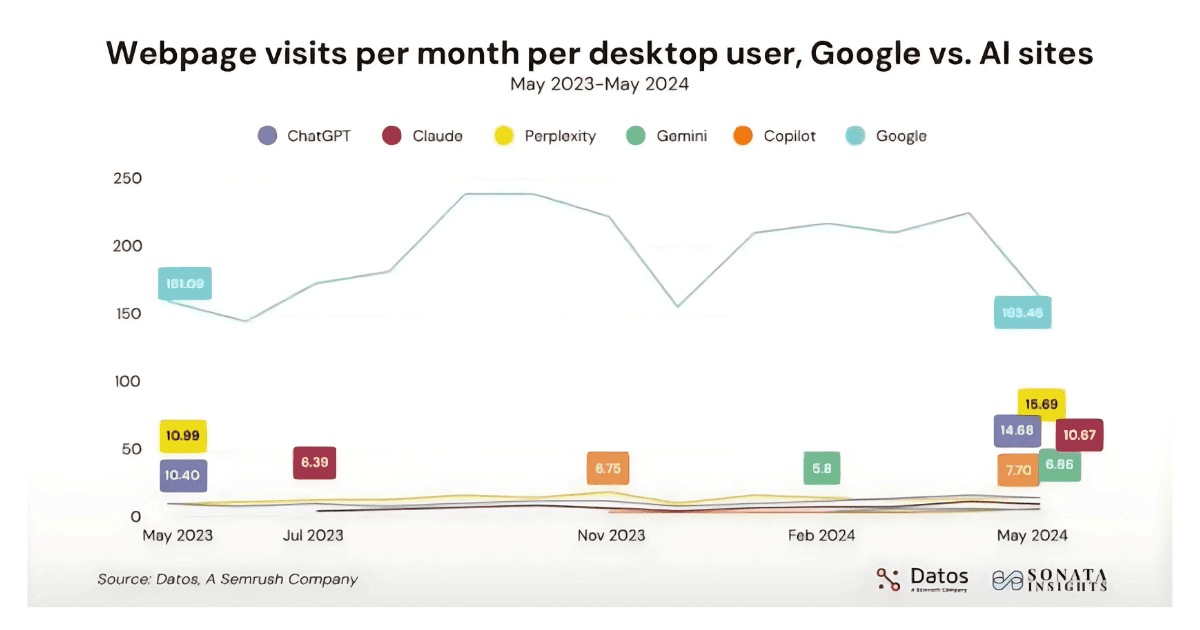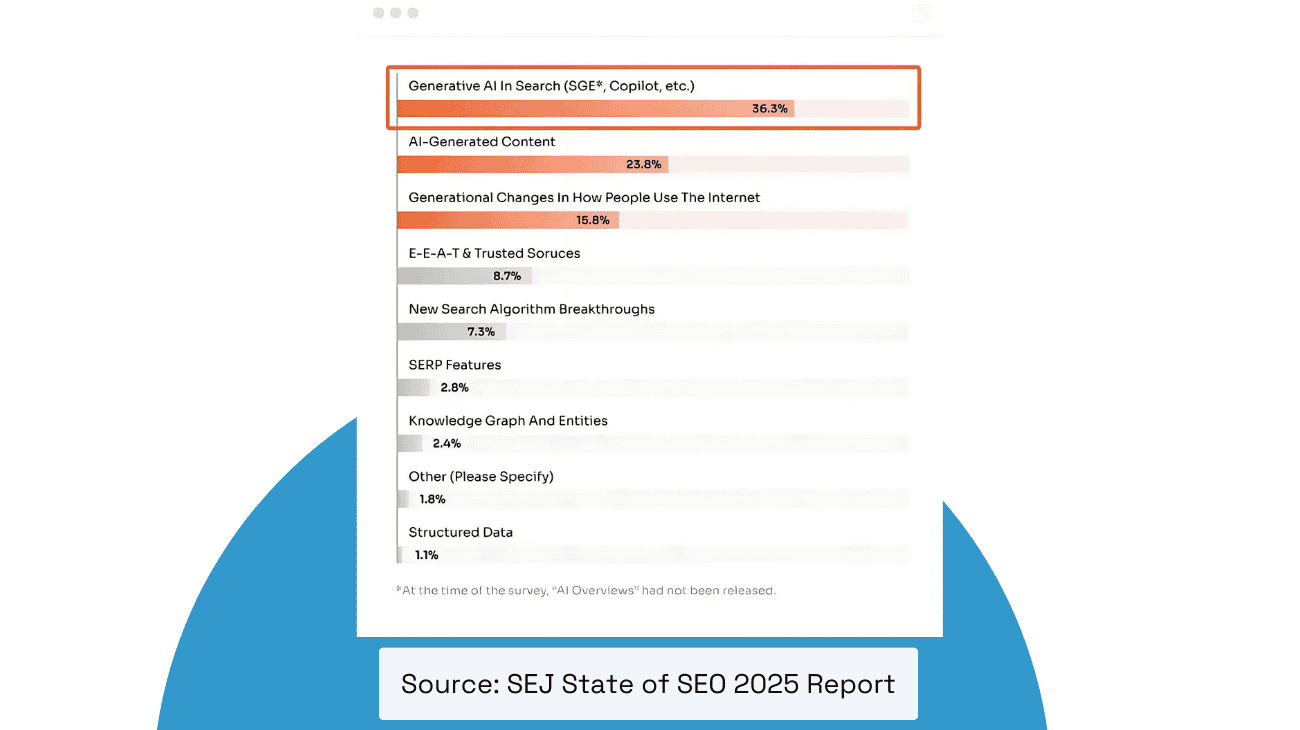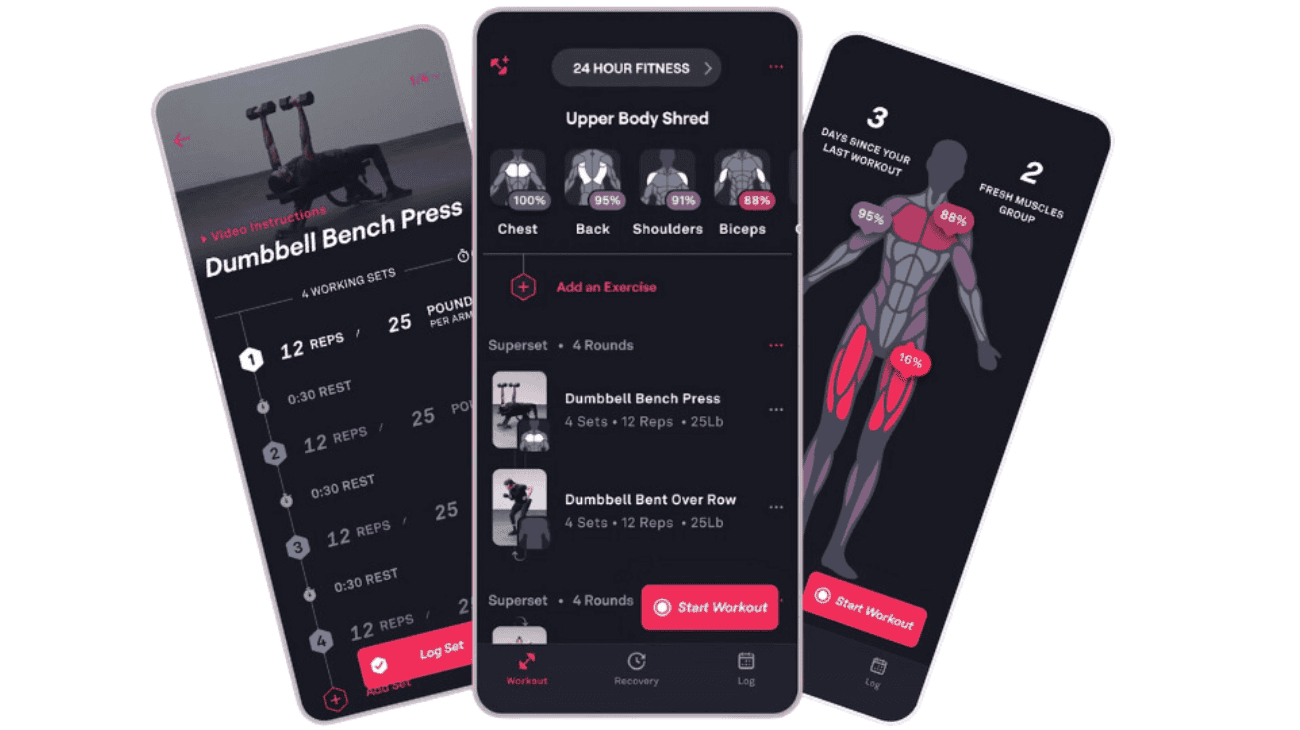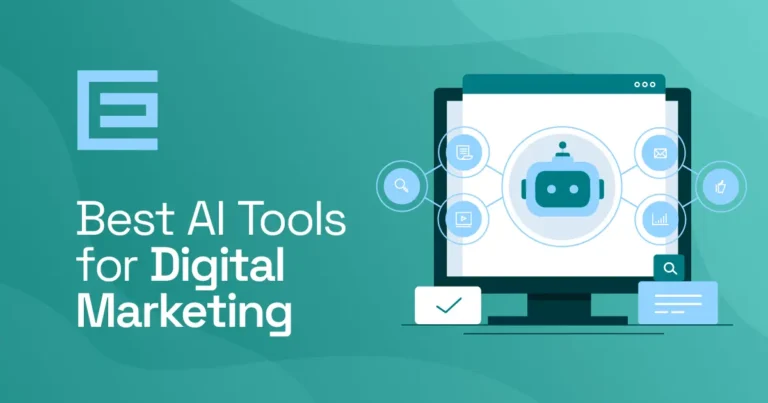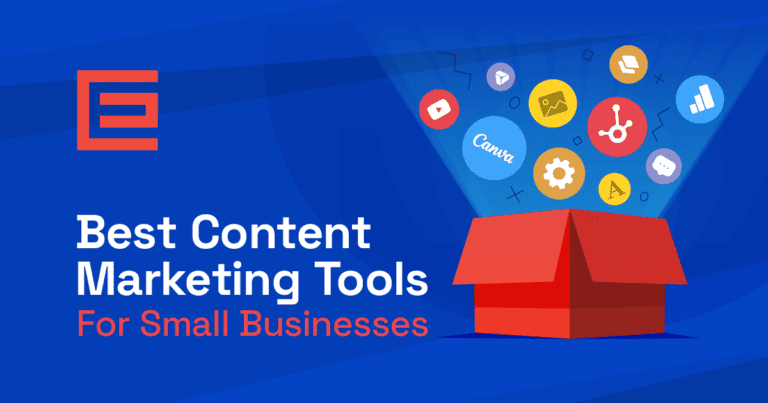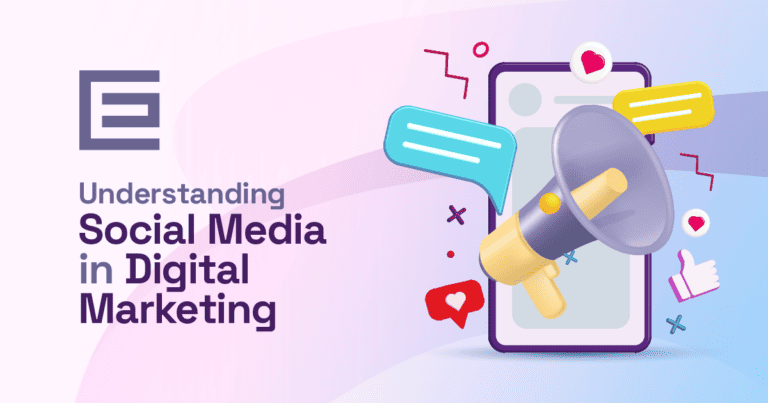Digital marketing trends continue to evolve at an unprecedented pace, with 2025’s reshaping how brands forge meaningful connections with their audiences. While core trends like AI, personalization, and data analytics remain fundamental, emerging digital marketing trends grow more dynamic each day. understanding these latest trends is necessary for business owners and marketers to create strategies that truly resonate and deliver measurable results.
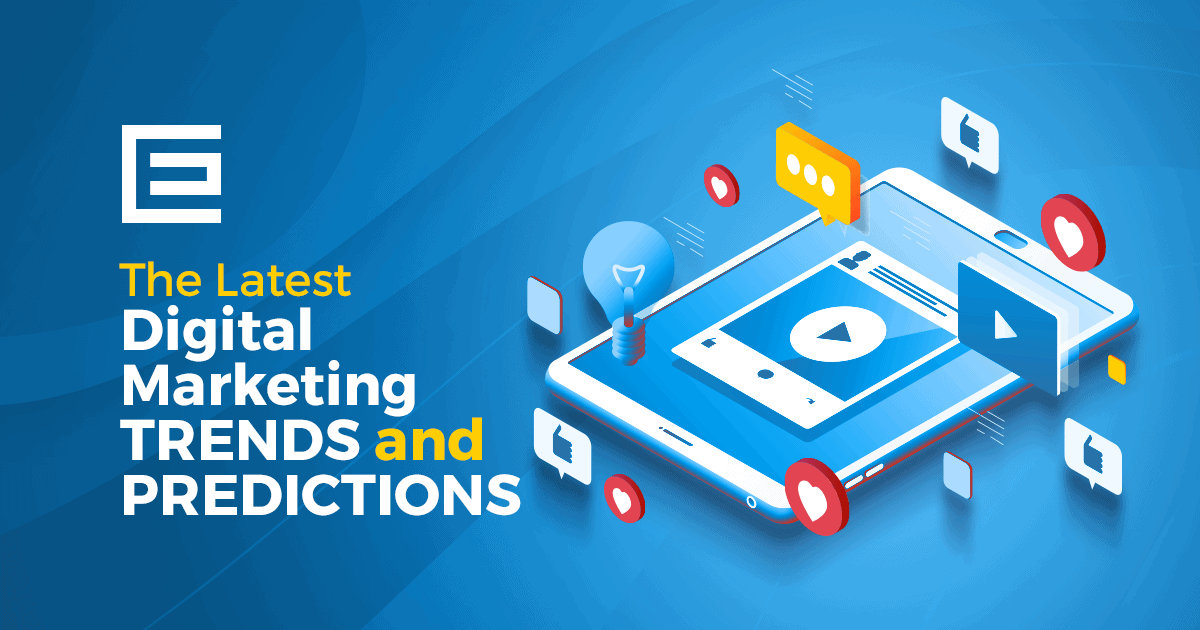
Digital Marketing Trends for 2025:
- 1Understanding Digital Marketing Trends in 2025: The AI Revolution
- 2Essential Types of Digital Marketing Trends: From Voice to Visual Search
- 3Voice Search in 2025 Following Digital Marketing Trends: ROI and Growth Impact
- 4Visual Search Optimization Choosing Effective Digital Marketing Trends for Your Business
- 5Continued Blurring of Platform Boundaries
- 6Emerging Digital Marketing Trends: Social Commerce and Phygital Experiences
- 7Ads are Getting a Makeover
- 8Social Commerce Will Be the New StoreFront
- 9Personalization: Defining Digital Marketing Trends in 2025
- 10Integrating Channels for Consistency and Synergy
- 11Building a Strong Brand Based on Values
- 12Ethical and Inclusive Marketing in 2025
- 13Digital Marketing Trends: Final Thoughts and Implementation Guide
- 14Digital Marketing Trends FAQs
Key Digital Marketing Trends 2025:
- AI and Machine Learning Transformation
- Search Everywhere Optimization
- Voice Search Evolution
- Visual Search Integration
- Platform Boundary Shifts
- Phygital Shopping Experiences
- Advanced Ad Formats
- Social Commerce Growth
- Hyper-Personalization
- Channel Integration
- Value-Based Branding
- Ethical Marketing Practices
1. Understanding Digital Marketing Trends: AI and Machine Learning in 2025
Among the most impactful digital marketing trends for 2025, AI and machine learning stand out as transformative forces. This is reshaping how businesses approach customer engagement and data analysis. In 2025, the integration of these technologies will go beyond basic automation to fundamentally reshape the digital landscape.
How AI and ML is Shaping Current Digital Marketing Trends
AI and ML capabilities are extending far beyond basic automation. These digital marketing trends in 2025 demonstrate how AI systems are learning from data, identifying patterns, and making decisions that drive marketing success. Industry experts predict that AI-driven strategies will account for 75% of all marketing activities by 2025.
AI Search Evolution
Google’s AI overviews now reach over 1 billion users in more than 100 countries, significantly changing user interactions with search results (Source: Google). These efforts to keep users on its platform continue to intensify, creating new challenges for marketers. AI-powered features have reduced position-one organic search click-through rates from 50% to 28-30% by displaying more information directly in results.(Source: SparkToro)
Digital marketing trends in search are evolving rapidly as Google’s AI overviews reach over 1 billion users across 100+ countries. This shows significant changes in user search behavior and expectations. According to the latest digital marketing trends report:
- 16% of searches now display images (Source: Moz)
- 62% include video carousels (Source: semrush).
- 60% of U.S. searches result in zero clicks (Source: SparkToro)
Trends in Search Platforms
While Google maintains dominance, emerging digital marketing trends reveal a diverse ecosystem of AI-powered search platforms. Specialist James Chen emphasizes, “The digital marketing trends we’re seeing in search platforms represent a fundamental shift in how users discover content.
While Google maintains its dominance, 2025 has welcomed a diverse ecosystem of AI-powered search platforms. Tools like SearchGPT (powered by Bing), Perplexity, and Claude AI are growing exponentially, creating a more complex search landscape. To succeed, boost visibility across all platforms and closely analyze how users find your site. As these new search platforms continue to grow, businesses must cast a wider net while maintaining their Google presence.
SEO Disruptions Due to AI Over the Next 2 Years
AI-enhanced search will disrupt SEO in 2025, as 79% of consumers plan to use it and 70% trust generative AI results (SEJ, “SEO in the Age of AI”) Consumers will demand more streamlined, efficient answers directly in SERPs, pushing for AI-generated content. As a result, SEO remains vital since AI systems, including LLMs, still depend heavily on search engines – we need to adapt our strategies for this AI-enhanced landscape.
This may involve optimizing for natural language queries, ensuring that information is structured in a way that is easily digestible by AI algorithms, and focusing on providing value-added insights that go beyond simple factual responses.
Social Platform Integration: Key Digital Marketing Trends
Social platforms revolutionizing campaign management through AI. Meta, TikTok, LinkedIn, and Snapchat shifting toward automated optimization. Leading digital marketing trends indicate over 15 million AI-generated ads created monthly, reshaping how brands engage audiences.
AI-Driven Customer Journey: Future Digital Marketing Trends
Among the most significant digital marketing trends for 2025, the evolution of customer journeys stands out. AI systems unify previously disconnected platforms, creating seamless omnichannel experiences.
The Human-AI Balance in Digital Marketing Trends
In 2025, we see AI moving from content generation to data optimization. These emerging digital marketing trends reveal that human-created content consistently outperforms purely AI-generated material, establishing new standards for digital marketing trends in content creation.
Ethics and Future Digital Marketing Trends
Ethical considerations will become increasingly important, and the latest trends emphasize transparency and data privacy.
The Road Ahead: Digital Marketing Trends 2025 and Beyond
AI’s role continues to evolve and success will depend on balancing efficiency with authentic connections. AI is no longer just a tool—it’s becoming the foundation of modern marketing strategy.

2. Search Everywhere Optimization
By 2025, content discovery is shifting, with AI-driven platforms like ChatGPT and alternatives to Google taking center stage. YouTube has become the second-largest search engine in the world, while 40% of Gen Z now use TikTok as their primary search tool. To stay relevant, brands must adapt their strategies to encompass “search everywhere optimization.”
This means ensuring visibility not just on traditional search engines like Google, Bing, and Yahoo, but also on platforms such as ChatGPT, YouTube, TikTok, and even app stores. With each channel becoming increasingly saturated, a solo-channel strategy is no longer effective. Instead, brands must adopt an omnichannel approach, you want to show up across many different places and take up all SERP real estate that you can across different platforms.
Voice search represents one of the fastest-growing digital marketing trends of 2025. Understanding these voice search is crucial for businesses aiming to stay competitive.
3. Voice Search Digital Marketing Trends: The 2025 Revolution
Voice search has evolved from a convenience to a necessity, with over 1 billion monthly voice searches and 41% of US adults using voice daily. Seeing that Gen Alpha and Gen Z lead this transformation, having grown up speaking to devices before learning to type, voice-based queries are becoming the new norm, redefining the traditional approach to SEO
AI-Powered Voice Search and SEO
Among the most transformative trends of 2025, voice search stands at the forefront of innovation. These voice-focused search is reshaping how consumers interact with brands, with industry experts predicting that voice commerce will reach $80 billion by 2025 You might ask a question in natural language, and despite not using traditional keywords, AI understands exactly what you’re seeking. Consequently, marketers can now target keyword optimizations that were previously out of reach.
The semantic relationship between queries will only strengthen, especially as younger generations naturally adopt more conversational search patterns. Voice searches now make up 20% of mobile queries (Source: BOL), signaling a shift from keyword matching to intuitive understanding in search optimization. Staying updated with the latest in voice search technology, understanding user intent, and continuously adapting SEO strategies will be essential for success in this area.
Conversational Marketing Impact
This shift toward voice-driven interaction has revolutionized conversational marketing, with projections showing this marketing style can increase conversion rates by up to 45% (Source: BOL). By 2025, Salesforce predicts 95% of customer interactions will occur through AI-driven conversational marketing. From sophisticated chatbots to interactive forms and support threads. This shift enables enhanced personalization and round-the-clock support, creating more engaging customer experiences.
Structuring Content for Voice Search in 2025
With semantic understanding and intent recognition reaching new heights, content structure must evolve beyond basic question-and-answer formats. While long-tail keywords remain important, AI’s advanced comprehension means content can focus more on natural conversation flow. As a result, websites should prioritize conversational content that addresses user intent, even when queries don’t match exact keywords.
This shift allows marketers to optimize for a broader range of potential questions while trusting AI to understand user intent, making previously unreachable keyword opportunities now accessible, thanks to digital marketing trends in 2025.
Technical Optimization for Voice Search
As AI’s semantic understanding evolves, technical optimization remains important but has shifted focus. While traditional elements like schema markup and featured snippets still play a role, they’re now part of a broader technical framework that supports conversational search. Successful voice search optimization requires a technical foundation that enables AI to understand and interpret your content naturally.
Key Technical Considerations:
- Enhanced schema markup for conversational context
- Strategic featured snippet optimization for AI interpretation
- Mobile-first technical setup (crucial as 20% of mobile searches are voice-based)
- Fast loading speeds for voice-activated results
- Natural language processing-friendly content structure
The goal isn’t just to rank for specific keywords anymore—it’s to ensure your technical framework supports AI’s ability to understand and deliver your content in conversational contexts.
4. Visual Search: Transforming Discovery in 2025
As we examine visual search, it’s clear that search and SERPs are becoming more visually driven than ever before. These emerging marketing trends show how platforms are moving beyond text-based results to incorporate videos, image carousels, and map packs—all designed to capture user attention. Visual search presents unprecedented opportunities for brands to improve their visibility
Significantly, what’s particularly noteworthy is Google Lens’s massive user base, which rivals that of ChatGPT in terms of monthly interactions, though it receives far less attention in marketing discussions.
As humans are naturally visual creatures, platforms like Pinterest, TikTok, and Instagram are leading this shift away from traditional text-based search, reflecting a fundamental change in how users find and interact with content online.
Optimizing for Visual Search in 2025 Digital Marketing Trends
Success in visual search requires a different approach to content creation and optimization. Brands need to:
- Optimize images and videos for search engine visibility
- Google Lens: Focus on high-quality, clear images that showcase unique product features
- Create engaging visual content that stands out in carousels and map packs
- Ensure visual content aligns with search intent
- Implement proper tagging and metadata for visual assets
5. Platform Convergence: Transforming Digital Marketing Trends 2025
The evolution of platforms into comprehensive digital ecosystems continues to accelerate. These emerging digital marketing trends show major tech companies blurring traditional boundaries, fundamentally reshaping how digital marketing trends impact user engagement and retention.
Convergent Digital Marketing Trends in Features
The latest trends show platforms rapidly adopting cross-platform capabilities:
- Google embracing e-commerce
- LinkedIn following trends in video content
- Meta integrating emerging across its ecosystem
Marketers must tailor strategies to reach audiences across multiple touchpoints. This includes platform-specific content, new ad formats, and real-time campaign optimization.
Video-First Digital Marketing Trends
In 2025 video will continue to be a dominant force. These trends demonstrate:
- Professional platforms embracing social features
- Traditional networks adopting short-form video
- Platforms prioritizing video-based engagement
6. Phygital Shopping Experience
Among the leading digital marketing trends for 2025, the convergence of physical and digital retail experiences stands at the forefront. This demonstrate how brands are mastering the “phygital” approach, representing one of the most significant digital marketing trends reshaping consumer experiences.
Understanding Phygital Digital Marketing Trends
Digital marketing trends specialist Rachel Chen explains, “The latest digital marketing trends in phygital retail represent the future of shopping. These digital marketing trends in 2025 show consumers demanding seamless transitions between online and offline experiences.”
Global retail chains are taking this concept further. H&M’s mall locations in Dubai showcase how interactive displays can transform store navigation, allowing customers to locate specific products across multiple store locations instantly.
McDonald’s: Pioneering Phygital Experiences
The latest digital marketing trends in quick-service retail show McDonald’s self-service kiosks exemplifying future of Phygital. Their implementation of these experiences has resulted in:
- 40% increased customer satisfaction
- 30% higher average order value
- 25% faster service times
7. Ads are Getting a Makeover as Part of 2025 Digital Marketing Trends
Among the most innovative digital marketing trends of 2025, advertising formats are undergoing a revolutionary transformation. These emerging digital marketing trends show how AI and visual technology are reshaping the advertising landscape, representing one of the most significant digital marketing trends in consumer engagement.
Augmented Reality Ads in 2025 Digital Marketing Trends
Augmented reality (AR) ads allow advertisers to overlay digital visual elements and sound in a real-world setting, creating an immersive and interactive experience for consumers. AR ads enable real-time interactions with products, helping consumers make more informed purchasing decisions and increasing their confidence in the products they buy.
As digital advertising continues to evolve in 2025, marketers must stay up-to-date with the latest ad formats and features to effectively reach and engage their target audiences. By embracing visual, interactive, and AI-powered ad experiences, advertisers can create more compelling campaigns that drive better results and improve the overall consumer experience.
8. Emerging Digital Marketing Trends: Social Commerce as the New StoreFront
As we analyze digital marketing trends for 2025, social commerce emerges as a game-changing force. This evolution in digital marketing trends demonstrates how shopping behaviors are fundamentally shifting. Social commerce is set to revolutionize the way consumers discover and purchase products, transforming social media platforms into new storefronts. With social commerce revenues projected to surpass 1 trillion US dollars by 2028, this 2025 digital marketing trend shows no signs of slowing down. The integration of social media and e-commerce is transforming shopping, making it easier and more engaging for consumers.
Influencers at the Forefront of Product Discovery in Digital 2025 Marketing Trends
Influencers play a crucial role in the rise of social commerce, serving as the primary gateways for users to discover new content and products across various social platforms. With their niche expertise and loyal followings, influencers have become the go-to sources for product recommendations and inspiration.
In 2025, influencers will take a more prominent role in fostering direct sales by leveraging advanced video formats and interactive shopping features to encourage purchases.
Live Commerce will Take Over 2025 Digital Marketing Trends
To capitalize on the growing potential of social commerce, influencers will increasingly utilize advanced video formats and interactive features to showcase products and engage with their audiences.
Live streaming allows influencers to promote products in real-time, with click-to-buy options expanding globally across platforms next year. Live shopping is expected to become the norm, with platforms pushing this feature even harder as they stand to benefit from a cut of the sales.
In-Feed Shopping: A Seamless Experience for 2025 Digital Marketing Trends
As social commerce continues to evolve, the focus will be on creating a seamless shopping experience for consumers. Platforms will aim to simplify shopping, enabling users to find, research, and buy products directly within their favorite social media apps. Integrating social media with e-commerce will streamline shopping, boost engagement, and drive impulse purchases, increasing sales.
Challenges and Embracing Future Trends in Social Commerce
While social commerce presents immense opportunities, brands must navigate challenges such as maintaining brand consistency across platforms, ensuring data privacy and security, and adapting to constant changes in the social media landscape.
As technology advances, the future of social commerce will likely see the integration of augmented reality (AR) and virtual reality (VR) to offer even more immersive shopping experiences. Additionally, artificial intelligence (AI) will enable more sophisticated personalized shopping experiences and product recommendations.
Preparing for the Shift to Social Commerce
To thrive in the era of social commerce, brands must embrace this shift and adapt their strategies accordingly. This includes partnering with influencers who align with their brand values, creating engaging and interactive content, and prioritizing a seamless shopping experience for consumers. By staying agile and keeping up with the latest trends and technologies, brands can effectively leverage social commerce to drive sales and foster long-lasting customer relationships in 2025 and beyond.
9. Personalization: Defining Digital Marketing Trends in 2025
The evolution of digital marketing trends in personalization continues to accelerate, with AI-driven customization becoming increasingly sophisticated. Leading digital marketing trends analyst Sarah Chen notes, ‘The digital marketing trends we’re seeing in personalization are revolutionary—brands can now create truly individual experiences at scale.
Personalization involves using data and insights to deliver relevant content, product recommendations, and experiences that resonate with the individual customer. This approach improves customer satisfaction and drives better marketing results.
Hyper-Personalization at Scale in 2025
2025’s AI algorithms will enable true hyper-personalization with real-time customer data to deliver tailored content across websites, emails, and messaging platforms. AI now powers adaptive chatbots that can customize and personalize their communication style based on individual user behaviors, algorithms enable distinct approaches for different markets – targeting company-specific needs in B2B, while focusing on individual preferences and purchase history in B2C environments.
It’s important to note that hyper-personalization at scale doesn’t always translate to a significant boost in conversions compared to regular personalization. Brands must be careful not to cross the line from being helpful to being perceived as creepy or intrusive. The key is to find the right balance, ensuring that personalization is helpful to the customer experience.
One notable example of effective hyper-personalization is Fit Bod, a fitness app, uses AI to analyze users’ sleep, activity, and stress levels, offering personalized coaching and workout recommendations. This tailored approach enhances user engagement and sets Fit Bod apart from generic fitness apps.
AI-Powered Personalization 2025 Trends
AI can analyze vast amounts of customer data in real-time, enabling brands to create personalized content not just for websites, but also for email messages and chatbots. AI will play a crucial role in making personalization even smoother and more seamless in 2025. By using AI to understand customer preferences, brands can provide personalized content more efficiently and with less manual effort.
This will result in improved customer satisfaction and higher conversion rates.
B2B Gets Personal in 2025
In 2025, personalization will become increasingly important in the B2B space. Moreover, recognizing that there’s more to people than just their professional personas, B2B companies will need to adapt to the deeper layers of their target audience to effectively generate sales. This is particularly important given the typically longer sales cycles and larger contracts in B2B.
By recognizing and addressing the unique personalities, hobbies, and interests of decision-makers, B2B brands can strengthen relationships and boost success
Privacy Meets Personalization in 2025
As privacy concerns continue to grow, advertisers will need to obtain explicit consent from users to deliver personalized ad experiences in 2025. Starting January 27, 2025, the FCC will require advertisers to get and keep written consent from consumers before using robocalls or robotexts for marketing.
Preparing for the Future of Personalization
To thrive in the era of hyper-personalization, brands must invest in AI-powered technologies and data analytics to gain a deep understanding of their customers. They should also focus on creating seamless, omnichannel experiences that deliver consistent, personalized content across all touchpoints.
Additionally, brands must also balance personalization and privacy, ensuring customers feel their data is being used responsibly and transparently. By adapting to this evolving landscape they can build lasting customer relationships and achieve long-term success.
Personalization Digital Marketing Trends to Watch
- AI-driven customer journey mapping
- Real-time personalization engines
- Privacy-first personalization strategies
- Cross-channel personalization integration
10. Channel Integration: Critical Digital Marketing Trends for 2025
In 2025, businesses that effectively integrate their marketing channels by adopting an omnichannel approach, where channels work together seamlessly, will see gains in their overall performance. Specifically, by leveraging AI to synchronize efforts across platforms, companies can expect up to a 35% uplift in marketing performance, according to the AI Marketing Engineers.
Increased Awareness Affects SEO Performance in 2025’s Digital Marketing Trends
Significantly, when brands successfully integrate their marketing channels and create synergy, they often experience a rise in brand queries – people searching for their brand name on Google. This is crucial, as seven of the top 10 queries on Google are brand names, such as Amazon, YouTube, Instagram, Facebook, and Gmail.
Cross-Platform Visibility
Notably, search engines increasingly factor in social content when determining rankings. As mentioned earlier, video carousels dominate more than 60% of search queries. Ubersys data also confirms that people engage with videos more than any other type of content when ranked above the fold.
Even if text appears higher in the search results, users are more likely to click on a video. This highlights the importance of cross-platform visibility, ensuring your brand is present and consistent across various channels, including Instagram, TikTok, and YouTube.
As digital marketing trends continue to evolve, the integration of marketing channels has become more crucial than ever. These digital marketing trends in channel integration show that businesses adopting an omnichannel approach see:
- 35% higher customer retention rates
- 40% increase in average order value
- 25% improvement in marketing ROI
11. Building a Strong Brand Based on Values
In 2025, building a strong brand based on authentic values will be the key differentiator for businesses. As competition intensifies and features become easier to replicate, a company’s brand remains the only true moat to protect its market share. Notably, just as Jordan shoes stand out from the crowd due to their association with Michael Jordan, rather than their quality alone, brands must focus on cultivating a unique identity that resonates with their target audience.
Being Real and Relatable
Furthermore, authenticity is crucial when building a strong brand. In fact, consumers now prefer genuine content over polished corporate ads. For example, a casual video of Christiano Ronaldo sharing personal experiences resonates more than a scripted commercial. Similarly, when celebrities like the Kardashians promote products, audiences respond better to authentic content than obvious paid ads.
Anonymous content is losing its appeal in the face of personalized and relatable experiences showcased through user-generated content. To be real and relatable, brands should focus on:
- Audience engagement: Actively listening to and interacting with your target audience to build a genuine connection
- Credibility and trust: Being transparent and consistent in your messaging and actions to establish trust with your audience
- Relatability: Showcasing the human side of your brand through authentic storytelling and user-generated content
- Virality potential: Creating content that resonates emotionally with your audience, increasing the likelihood of it being shared organically
- Cost-effective content creation: Leveraging user-generated content to reduce marketing costs while maintaining authenticity
- Long-term benefits: Building a loyal customer base that advocates for your brand, driving sustainable growth
In 2025, brands that prioritize authenticity and relatability will be best positioned to build a strong, enduring brand identity. By focusing on genuine audience engagement, credibility, and leveraging the power of user-generated content, companies can create a lasting competitive advantage in an increasingly crowded market.
12. Ethical and Inclusive Marketing in 2025 Digital Marketing Trends
In 2025, ethical and inclusive marketing will be more important than ever as consumers increasingly align their purchasing decisions with their values. Brands that demonstrate a commitment to social responsibility, sustainability, and inclusivity will resonate more deeply with their target audiences.
Marketing with Integrity and Purpose
Brands will need to ensure that their marketing efforts have a clear purpose and are grounded in integrity. Coca-Cola serves as a great example, showcasing their logo crumpled up to encourage recycling. Furthermore, Starbucks dedicates a page to putting people first, discussing topics like the environment, sustainability, and social equity. Additionally, if these issues are important to a brand’s customers, it’s crucial to leverage them and be relatable, or risk losing customers to competitors who do.
Aligning with Causes that Matter
In 2025, successful brands will align their goals and messaging with causes that matter to their audience, connecting on a deeper, values-based level. Some key areas of focus will include:
- Environmental sustainability: Promoting eco-friendly practices and products
- Social equity: Advocating for fairness and equality in society
- Community support: Giving back to local communities and supporting initiatives that benefit them
Moreover, according to a PwC study, 80% of consumers are willing to pay more for sustainably produced goods, highlighting the growing importance of these issues.
Embracing Inclusivity in Marketing
Inclusivity in marketing means representing diverse groups of people in advertising campaigns and considering the needs of a wide range of consumers in product development and marketing strategies.
- Diverse Representation: This involves showcasing people from various backgrounds, ethnicities, ages, sizes, abilities, and genders in marketing materials.
- Accessibility: Ensuring that marketing materials are accessible to people with disabilities, such as providing captions for videos or using screen-reader-friendly website designs.
Diverse Representation and Accessibility
Inclusivity in marketing will remain a top priority, with brands ensuring diverse representation in their campaigns and making their content accessible to all. Likewise, this includes featuring people from various backgrounds, ethnicities, ages, sizes, abilities, and genders, as well as providing captions for videos and using screen-reader-friendly website designs.
Balancing Profit and Purpose
While finding a balance between ethical practices and profitability can be challenging, it will be essential for building long-term brand loyalty and trust. Brands must be transparent about their business practices and take responsibility for the impact of their marketing campaigns.
The Future of Ethical and Inclusive Digital Marketing in 2025
In 2025, ethical and inclusive marketing will no longer be optional – it will be a necessity. As technology advances, tools like AI and data analytics will help brands better understand diverse consumer needs and create more personalized, inclusive content. Brands that fail to adapt to this new reality risk being left behind as consumers increasingly choose to support companies that align with their values.
By prioritizing integrity, purpose, and inclusivity, brands can build stronger connections with their customers and thrive in the years to come.
Having a Hard Time with Verifying Your Google Listing? We’re Here to Help!
Give us a call at 919-341-8901 or schedule a time with one of our Google listing experts.
Previous Trends in Digital Marketing That Have Become Standard or Common
2024 Vs. 2025 Digital Marketing Trends
| Digital Marketing Trends 2024 | Digital Marketing Trends 2025 |
|---|---|
| Basic AI Implementation | Advanced AI Integration |
| Traditional SEO Focus | Search Everywhere Optimization |
| Limited Voice Search | Expanded Voice Capabilities |
| Basic Visual Search | Advanced Visual Recognition |
| Platform Separation | Platform Convergence |
1. Video Marketing
Video marketing remains one of the most impactful digital marketing trends in 2025 and 2024. The digital landscape. Its power to engage and inform makes it an effective way for brands to meaningfully connect with audiences.
The Power of Video Content
Video’s blend of sight and sound engages viewers and delivers messages more memorably than other content formats.
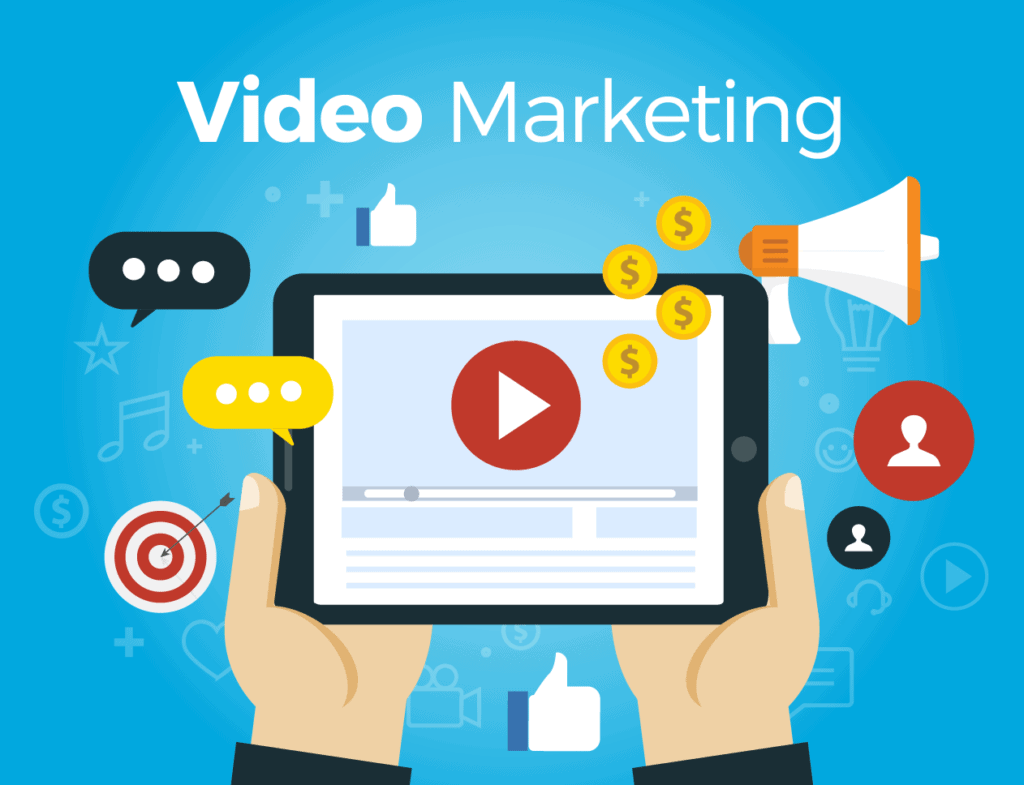
Types of Video Marketing
- Explainer Videos: These videos are designed to explain a product, service, or concept in an easy-to-understand manner. They are often animated and can be particularly effective in simplifying complex ideas.
- Brand Storytelling: Brand videos that share company values and stories forge emotional connections with viewers.
- Product Demos and Reviews: Showing a product in action or sharing reviews can significantly influence purchasing decisions.
- Live Streaming: Live videos on platforms like Facebook, Instagram, and YouTube offer real-time engagement, making them a powerful tool for events, Q&A sessions, and behind-the-scenes glimpses.
- User-Generated Content: Encouraging customers to create their own videos related to a brand or product can boost authenticity and trust.
The Rise of Short-Form Video Content
Platforms like TikTok and Instagram Reels have popularized short-form video content. These brief, often creative videos are highly shareable and can quickly go viral, offering significant exposure for brands.
Video SEO
Just like traditional content, videos need to be optimized for search engines to increase visibility.Videos should use keywords in titles, descriptions, and tags across popular platforms.
Challenges in Video Marketing
- Creating High-Quality Content: Producing engaging and high-quality video content requires resources, including equipment, editing skills, and creative planning.
- Staying Relevant: Brands must adapt to changing video trends in digital marketing to stay engaging.
- Measuring ROI: Tracking video marketing success requires clear goals and metrics.
Future Trends in Video Marketing
Video marketing’s future will feature interactive content and immersive AR/VR experiences. Personalization in video content, where videos are tailored to individual viewer preferences, is also expected to rise.
2. The Metaverse
The Metaverse is a network of 3D virtual spaces where users interact, work and play together using VR and AR technology.
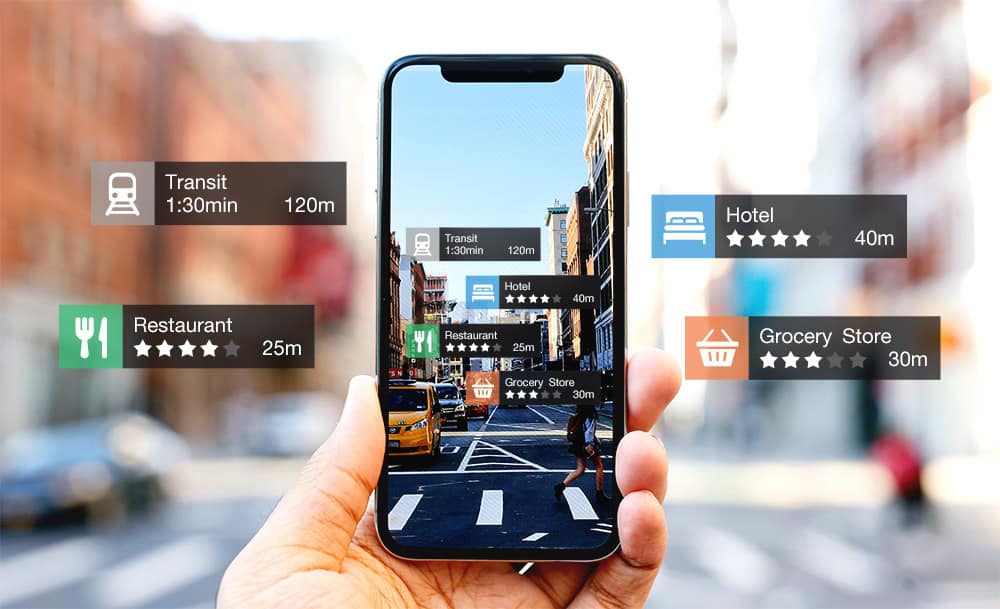
Marketing Opportunities in the Metaverse
- Brand Experiences and Virtual Spaces: Companies can create immersive brand experiences in the Metaverse. Virtual showrooms and events let customers interact with products and experiences in 3D online.
- Virtual Goods and NFTs: The Metaverse opens up opportunities for selling virtual goods. Brands can offer exclusive digital assets like NFTs in virtual spaces.
- Enhanced Customer Engagement: The Metaverse allows for deeper levels of customer engagement. Brands can create more engaging experiences than traditional platforms.
Challenges in Marketing within the Metaverse
- Navigating a New Environment: The Metaverse is a relatively new and continuously evolving space. Marketers need to understand its dynamics and user behavior, which can be vastly different from traditional digital marketing platforms.
- Technical and Creative Demands: Creating compelling content in the Metaverse requires a blend of technical know-how and creative design. Brands need to invest in the right talent and technology to build engaging virtual experiences.
- Privacy and Security Concerns: As with any digital platform, the Metaverse raises concerns about data privacy and security. Brands will need to navigate these challenges carefully to build trust with their audience.
The Future of the Metaverse in Marketing
The potential of the Metaverse in marketing is immense. As technology advances, we can expect more seamless integration of AR and VR, leading to more immersive and interactive experiences. The Metaverse offers brands new ways to connect with audiences through immersive 2025 digital trends in digital marketing and experiences.
Preparing for the Metaverse
For businesses looking to step into the Metaverse, the key is to start small and learn. Experimenting with AR and VR, understanding the audience within these spaces, and staying updated with technological advancements are crucial steps. As the Metaverse grows, it will offer a new canvas for creative and innovative marketing strategies.
3. Influencer Marketing
Most importantly influencer marketing has evolved significantly in recent years, becoming a key strategy in digital marketing trends and campaigns. Consumer habits have shifted toward authentic content across social platforms.
Understanding Influencer Marketing
Influencer marketing partners with social media personalities whose audience trust and influence can drive purchasing decisions.
The Shift to Micro and Nano Influencers
The shift to smaller influencers, influencers with 1,000-100,000 followers has taken off and often drives more engagement through niche, authentic content than celebrity influencers.
Authenticity and Transparency
Consumers are increasingly seeking authenticity and transparency in marketing. Authentic influencers who truly connect with their followers drive more sales. This shift has led brands to focus on building long-term relationships with influencers whose values align with their own.
Diversifying Platforms
Instagram and YouTube lead influencer marketing, but TikTok, Twitch, and LinkedIn are rising. Each platform caters to different audiences and content styles, allowing for more targeted influencer campaigns.
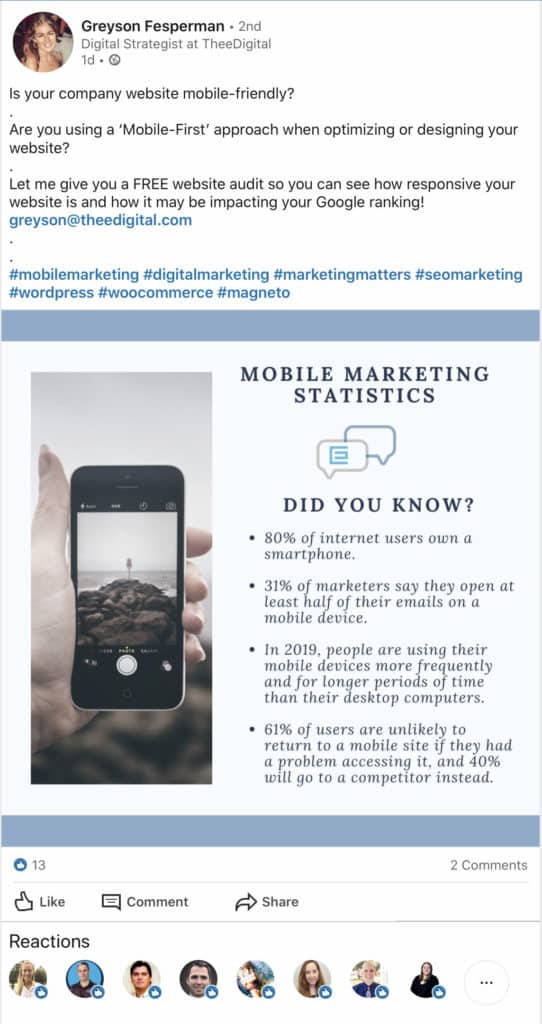
Challenges in Influencer Marketing
- Finding the Right Influencer: A mix of micro and nano influencers can expand audience reach.
- Measuring Impact: Quantifying the success of influencer marketing campaigns can be difficult. Brands need to establish clear metrics and goals to effectively measure ROI.
- Navigating Regulations: Influencer marketing must follow ad disclosure rules to maintain trust and compliance.
Strategies for Effective Influencer Marketing
- Building Relationships: Successful influencer marketing is based on strong relationships. Brands should focus on building long-term partnerships rather than one-off campaigns.
- Co-Creating Content: Collaborating with influencers in the content creation process can lead to more authentic and effective campaigns.
- Leveraging User-Generated Content: Encouraging influencers to create user-generated content can enhance authenticity and engagement.
- Diversifying Influencer Mix: A mix of micro and nano influencers can expand audience reach.
The Future of Influencer Marketing
Interactive content engages users by responding to their direct input. For that reason we can expect increased use of AI and data analytics for better influencer matching and campaign optimization. In conclusion, as new social media platforms emerge and evolve, influencer marketing strategies will need to adapt accordingly.
4. Interactive Content and Micro-Moments in Digital Marketing
Interactive content and micro-moments are revolutionizing digital marketing by engaging users during key moments of their online experience.
Understanding Interactive Content
Successful content is content that actively responds to user input rather than passive consumption. This can include quizzes, polls, interactive infographics, augmented reality experiences, and more. The key is that these formats invite the user to participate, creating a more engaging and memorable experience.
Types of Interactive Content
- Quizzes and polls engage users with personalized results.
- Interactive videos let viewers choose paths and respond to content.
- AR overlays digital elements on reality for virtual try-ons and visualization.
- Calculators and tools help users solve specific problems.
The Power of Micro-Moments
Micro-moments are when people use devices to instantly learn, do, find, watch, or buy something.These moments are critical touchpoints within the consumer journey and present opportunities for brands to influence decisions.

Capitalizing on Micro-Moments
- Understanding Consumer Intent: Brands must identify why consumers visit their platforms – whether to learn, buy, or be entertained.
- Optimizing for Mobile: Given that most micro-moments occur on mobile devices, having a mobile-optimized platform is crucial. This includes fast loading times, easy navigation, and a seamless user experience.
- Content Relevance and Speed: In micro-moments, consumers expect quick and relevant responses. Content should be optimized to provide immediate answers or solutions.
Challenges in Leveraging Interactive Content and Micro-Moments
- Creating Quality Interactive Content: Developing engaging and high-quality interactive content requires creativity, technical skills, and often, a higher budget.
- Data Privacy Concerns: Collecting data through interactive content must be done with respect for privacy laws and consumer preferences.
- Analyzing Performance: Interactive content and micro-moment success requires sophisticated tracking and analysis.
The Future of Interactive Content and Micro-Moments
Essentially micro-moments will also evolve with changing consumer behaviors and technological advancements.
5. Push Notifications and SMS Marketing in Digital Marketing
Mobile notifications and SMS marketing provide direct, instant ways to reach consumers. Consequently, these channels are particularly effective for time-sensitive communication, personalized alerts, and fostering ongoing customer relationships.
Understanding Push Notifications
Push notifications are messages that pop up on a mobile device or desktop from apps or websites. Therefore they’re used to deliver various types of content, including promotional offers, reminders, breaking news, or personalized updates. The key advantage of push notifications is their immediacy and visibility, making them hard to miss.
Advantages of Push Notifications
- Immediate Engagement: Push notifications are delivered in real-time, making them ideal for time-sensitive messages.
- High Visibility: Most Push notifications command more attention than other digital messages by appearing directly on screens.
- Personalization: They can be personalized based on user behavior, preferences, and location, increasing relevance and effectiveness.
Strategies for Effective Push Notifications
- Opt-In Approach: Users must be allowed to opt in to notifications to maintain privacy and control.
- Segmentation and Targeting: Sending notifications based on user interests, behavior, and demographics can significantly increase engagement rates.
- Timing and Frequency: Push notifications must be carefully timed and paced to prevent user fatigue.
Understanding SMS Marketing
SMS marketing involves sending promotional campaigns or transactional messages for marketing purposes using text messages. Push and SMS messages deliver offers and updates to customers who opt in.
Advantages of SMS Marketing
- Wide Reach: With the vast majority of the population owning mobile phones, SMS has a broad reach.
- High Open Rates: SMS messages have higher open rates than email.
- Direct Communication: SMS allows for direct communication with the customer, which can be more personal and effective.
Strategies for Effective SMS Marketing
- Consent is Key: Always obtain consent before sending SMS messages to ensure compliance with regulations and respect for customer preferences.
- Clear and Concise Messages: Keep messages short, clear, and to the point, with a strong call to action.
- Integration with Other Channels: Combine SMS with other marketing channels for a cohesive marketing strategy.
Challenges in Push Notifications and SMS Marketing
- Maintaining Relevance: Ensuring that messages are relevant and valuable to the recipient is crucial to avoid opt-outs.
- Regulatory Compliance: Both push notifications and SMS marketing are subject to various regulations, which marketers need to adhere to.
- Balancing Frequency and Impact: Finding the right frequency of messages to maintain engagement without being intrusive can be challenging.

The Future of Push Notifications and SMS Marketing
As technology evolves, we can expect more advanced targeting and personalization capabilities in both push notifications and SMS marketing. The integration of AI and machine learning could lead to more sophisticated and automated messaging strategies.
6. NFTs and Cryptocurrency in Marketing
The integration of Non-Fungible Tokens (NFTs) and cryptocurrency into marketing strategies represents a cutting-edge trend in the digital landscape. These technologies redefine digital ownership, enabling fresh brand engagement and customer interaction.
Understanding NFTs Trends in Digital Marketing
NFTs are unique digital assets verified using blockchain technology, which ensures their authenticity and ownership.
Applications of NFTs in Marketing
- Digital Collectibles: Brands can create limited-edition digital collectibles, enhancing customer loyalty and engagement.
- Brand Experiences: NFTs can offer exclusive access to events, promotions, or experiences, adding a new dimension to customer interaction.
- Authenticity and Exclusivity: NFTs provide a way to authenticate digital assets, making them exclusive and potentially more valuable.
Challenges with NFTs in Marketing
- Understanding and Adoption: The concept of NFTs can be complex, and widespread consumer understanding and adoption are still developing.
- Environmental Concerns: The energy consumption associated with blockchain and NFTs has raised environmental concerns, which brands need to consider.
Cryptocurrency in Digital Marketing Trends
Cryptocurrency, a digital or virtual currency that uses cryptography for security, is becoming an increasingly popular payment method. Its integration into marketing strategies can offer several benefits.
Advantages of Cryptocurrency in Digital Marketing
- New Payment Options: Accepting cryptocurrencies can attract a tech-savvy audience and open up new markets.
- Global Reach: Cryptocurrencies can facilitate easier international transactions, expanding the potential customer base.
- Brand Innovation: Using cryptocurrency can position a brand as innovative and forward-thinking.
Challenges in Cryptocurrency Digital Marketing
- Volatility: The value of cryptocurrencies can be highly volatile, which can be a risk for both businesses and consumers.
- Regulatory Uncertainty: The regulatory landscape for cryptocurrencies is still evolving, posing challenges for compliance.
- Security Concerns: While secure, cryptocurrencies are not immune to cyber threats, requiring robust security measures.
Future Digital Marketing Trends in NFTs
The future of NFTs and cryptocurrency in marketing is likely to see more widespread adoption as understanding and infrastructure improve. Marketing campaigns will increasingly use NFTs creatively, while cryptocurrencies become more accepted as payment methods.
7. Privacy, Cookies, and Data Security in Digital Marketing
Digital marketing will continue to focus more on advanced privacy measures, requiring marketers to adapt quickly to maintain trust while staying competitive
Understanding the Importance of Privacy in Digital Marketing
The protection of personal data in marketing activities defines digital privacy standards. This includes data obtained through websites, social media, apps, and other digital platforms.
The Role of Cookies
Cookies are small pieces of data stored on a user’s device used to remember information about visitors and their preferences. They play a crucial role in enabling personalized marketing experiences but have come under scrutiny for privacy concerns.
- Types of Cookies: There are various types of cookies, including session cookies, persistent cookies, and third-party cookies, each serving different functions.
- Consent and Compliance: With regulations like GDPR and CCPA, obtaining user consent for cookies has become a critical aspect of compliance.
Data Security in Digital Marketing
Data security involves protecting digital data, such as those collected in marketing campaigns, from unauthorized access, corruption, or theft throughout its lifecycle.
- Encryption and Secure Data Storage: Employing encryption and secure data storage practices is essential to protect sensitive customer information.
- Regular Security Audits: Conducting regular security audits can help identify and address vulnerabilities in data security.
Challenges in Balancing Marketing and Privacy
- Adapting to Regulatory Changes: Staying compliant with evolving data protection laws and regulations is a constant challenge for marketers.
- Consumer Trust: Maintaining consumer trust requires transparency in how data is collected, used, and protected.
- Technological Adaptation: Adapting marketing strategies in response to privacy-focused changes in technology, like cookie-less browsers and enhanced privacy settings, is becoming increasingly important.
Strategies for Privacy-Compliant Marketing
- Privacy-First Approach: Adopting a privacy-first approach in marketing strategies, ensuring that customer data is collected and used ethically and transparently.
- Educating Consumers: Providing clear information to consumers about how their data is used and the benefits it brings can help in gaining their trust and consent.
- Investing in Privacy Tech: Leveraging technology solutions that enhance privacy compliance can be a wise investment for long-term success.
The Future of Privacy in Digital Marketing
The future of digital marketing trends will likely see a continued emphasis on privacy, with more sophisticated privacy technologies and strategies emerging. Marketers will need to be agile and proactive in adapting to these changes to stay competitive and maintain consumer trust.
Digital Marketing Trends: Final Thoughts and Implementation Guide
As we analyze digital marketing trends for 2025, it’s clear that the digital landscape is undergoing unprecedented transformation. These emerging digital marketing trends, from AI-driven strategies to visual search capabilities, are fundamentally reshaping how brands connect with their audiences.
Implementation Roadmap for Digital Marketing Trends
To effectively leverage these digital marketing trends, focus on three key phases:
Phase 1: Foundation (First 90 Days)
Begin with core digital marketing trends that form your foundation. Start implementing AI tools for analytics and optimization while adapting your content for voice and visual search. These fundamental digital marketing trends will support more advanced initiatives as you progress.
Phase 2: Integration (Months 4-6)
As your digital marketing trends implementation matures, focus on connecting your marketing channels. Deploy personalization strategies and begin integrating social commerce features. The digital marketing trends in personalization and platform convergence are crucial for creating seamless customer experiences.
Phase 3: Optimization (Months 7-12)
Fine-tune your implementation of these digital marketing trends. Focus on scaling successful initiatives and optimizing cross-channel performance. The most successful digital marketing trends of 2025 will be those that effectively balance automation with authentic customer connections.
Looking Ahead
Industry experts studying digital marketing trends suggest that businesses implementing these strategies thoughtfully will see significant returns. As noted by leading digital strategist Mark Thompson, “The digital marketing trends we’re seeing in 2025 represent the most fundamental shift in customer engagement of the decade.”
Remember, success in implementing these digital marketing trends isn’t about adopting every new technology – it’s about choosing the right mix of trends that align with your business goals while delivering value to your customers.
Need help implementing these digital marketing trends into your strategy?
Our marketing experts can help! Get in touch by calling 919-341-8901 or scheduling a consultation.
Digital Marketing Trends FAQs
The key digital marketing trends to prioritize include AI integration, search everywhere optimization, voice search, visual search, and platform convergence. However, the most important trends for your business will depend on your specific industry, target audience, and business goals. We recommend starting with AI implementation and search optimization as these digital marketing trends form the foundation for other advanced strategies.
Digital marketing trends in 2025 show significant advancement in several areas:
– AI has evolved from basic implementation to sophisticated integration
– SEO has expanded from traditional focus to search everywhere optimization
– Voice search capabilities have become more advanced and widespread
– Visual search has progressed from basic to advanced recognition systems
– Platform integration has replaced previous platform separation
– Personalization has become more sophisticated
Investment in digital marketing trends should be strategic and aligned with your business objectives. Industry benchmarks suggest allocating 12-20% of your revenue to digital marketing, with about 30% of that budget dedicated to emerging digital marketing trends. However, start with pilot programs to test which trends deliver the best ROI for your specific situation.
Small businesses can effectively implement digital marketing trends by:
1. Prioritizing trends most relevant to their target audience
2. Starting with one or two key trends rather than trying to implement everything
3. Utilizing AI-powered tools to automate and scale efforts
4. Focusing on cost-effective strategies like voice search optimization
5. Leveraging existing platforms’ new features rather than building from scratch
Digital marketing trends evolve continuously, major shifts typically occur annually. However, some digital marketing trends, like AI and machine learning, represent longer-term transformations that continue to develop over several years. It’s important to stay informed about emerging trends while focusing on sustainable, long-term strategies.
ROI varies depending on the specific digital marketing trends implemented and how effectively they’re executed. However, businesses successfully implementing these trends typically see:
– 25-30% increase in conversion rates through AI-powered personalization
– 20% improvement in search visibility through search everywhere optimization
– 15-20% increase in engagement through voice search optimization
– 30% higher customer retention through integrated platform strategies
Digital marketing trends affect industries differently:
– E-commerce: Heavy focus on social commerce and visual search trends
– B2B: Emphasis on AI-driven personalization and platform integration
– Healthcare: Priority on voice search and privacy-focused marketing trends
– Retail: Focus on phygital experiences and visual search capabilities
– Finance: Emphasis on AI-powered personalization and security features
To effectively implement digital marketing trends, teams need:
– Data analysis capabilities
– AI and machine learning understanding
– Voice and visual search optimization skills
– Cross-platform marketing expertise
– Privacy and security knowledge
– Automation tool proficiency
Not adopting current digital marketing trends can lead to:
– Decreased market visibility
– Reduced competitive advantage
– Lower customer engagement
– Missed revenue opportunities
– Difficulty catching up as trends advance further
Tags: Digital Marketing • Our Favorites


